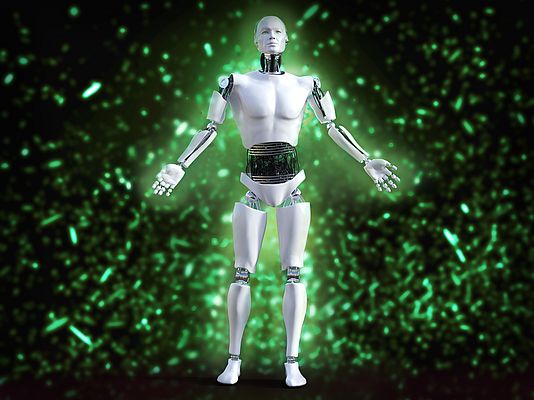In today’s digital world where automation, artificial intelligence and robotics deployments are changing the industrial enterprise landscape, the value of human input can often be overlooked. But when considering the advantages and disadvantages of our new robotic friends, we must first recognise how humans and robots can work together to drive manufacturing efficiencies.
While robots provide unparalleled consistency, accuracy and speed when compared to humans, they lack the dexterity which allow humans to adapt to new tasks and identify and correct errors and mistakes. Conversely, humans possess the common sense and critical thinking required to identify and adapt to unanticipated obstacles and complications, but lack the speed of their robot counterparts.
Collaborative robotics – or “Cobotics” – is an emerging technology trend which aims to combine the attributes of both robotic and human resources and get them to work together to perform tasks in synchronization, bringing out the best of both worlds. With cobotic deployments, humans are able to delegate some of the most repetitive tasks by training robots, freeing up their time to focus on tasks that require more adaption, critical thinking and compassion.
Evolution of Cobotics
In the past, robots were stationary, bulky and designed to perform specific tasks in confined, restricted areas. Their performance may have been efficient and ultimately effective, but the definition of the task had to remain exactly the same. One small change to a task could easily render a robot completely useless or require costly, time-consuming alterations to an assembly line.
But today, technologies and customer expectations are changing in real-time and product lifecycles are becoming shorter by the day. This demand for constant change is driving companies to continuously update their product lines to stay relevant with their customers. With recent advancements in robotic safety requirements, such as ISO/TS 15066*, programming robots to adapt to tasks and collaborate with humans has become easier than ever.
Modern robots have intelligent sensors and motors which allow humans to either hold their figurative hands or work simultaneously in a shared space, something that was not possible with earlier generations. New cobots are light-weight, consume less floor space, and can learn more than one set of tasks. They are also generally cheaper and faster to set up and integrate into a system, making them a natural fit in modern day assembly lines and floor spaces.
Planning For Advanced Automation
Building collaborative robots requires two simple steps. First, begin by choosing a basic robotic platform and programming it to do multiple tasks in a shared space. Robotics vendors offer multiple capabilities and solutions for robotics platforms, from providing a robot platform along with a software development kit (SDK) to training and teaching robots.
Once the basic robot platform is in place, next step is to build intelligence, as cobots are expected to observe and learn new jobs using computer vison technologies. Not all the scenarios can be taught during training, this necessitates cobots having self-learning capabilities using technologies like deep learning. Cobots can also share their learning with other cobots just like human beings. Cobots need to develop a good understanding of their surroundings using location awareness capabilities, depth and proximity sensing capabilities using sensors and object detection capabilities, so that they can perceive and respond to situations and not harm other cobots or human beings. Technology companies bring in such capabilities and help the robots transform to cobots.
Looking Ahead
Equipped with multitude of technologies like computer vision, artificial intelligence, collaborative robotics is a concept that will be a game changer for the manufacturing industry of the future. Cobots will be programmed to perform tasks that are simply too challenging and time consuming for either a robot or human being to do on its own. As perindustry reports collaborative robotics processes can reduce human idle time by as much as 85 percent.
As robots move from heavy-duty industrial applications to providing assistance and augmenting skills, more and more companies will be turning to cobots or risk being left behind.
The Workforce of the Future
Unlike the robots of the past, cobots are state-of-the-art tools in the hands of workers to produce more efficiently, in much the same way other professionals use mobile phones, tablets, and any other devices which help them perform better at their jobs. Cobots can be deployed to complete the most repetitive and tedious tasks while under the watchful eye of human workers, with a specific focus on simple tasks where errors can lead to expensive recovery costs and high customer dissatisfaction.
With a future of man/machine collaboration ahead, cobots are not here to steal our jobs, but to help humans become more efficient and excel in their professional environments.
























